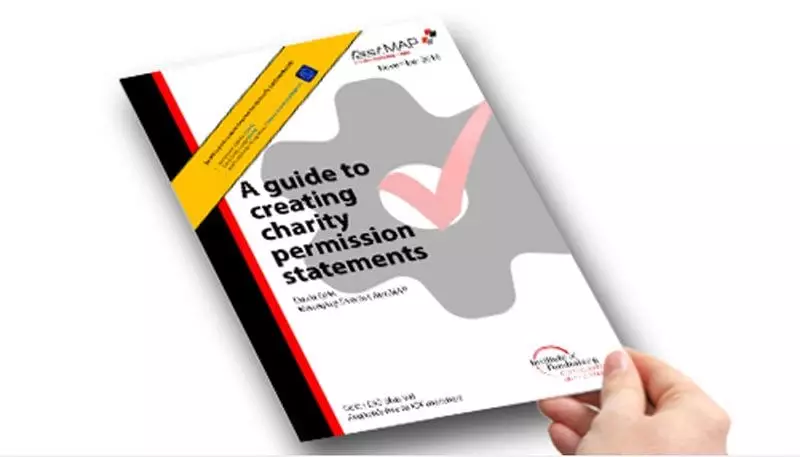fast.MAP advises on improved version of NCVO’s sample data consent statement
Data specialists fast.MAP have analysed NCVO’s recent sample consent statement and judged that it would lead to “below average” levels of donors choosing to opt in to receive charities’ communications.
The text of NCVO’s consent statement was published in Charities’ relationships with donors: Recommendations of the working group on how to enable donors to give consent, a guide to helping charities improve their support for donors’ consent. As part of the 21-page report, the sample statement was clearly identified as “illustrative only” and not to be taken as a template. The report added: “it is for each charity to communicate in a way that reflects its values and its relationship with its donors”.
However, fast.MAP’s CEO David Cole chose to analyse the consent statement because he was concerned that many charities would ignore that element of the advice and use the words as a template. He believes that, “for many [charities], consent is regarded as a technical job rather a persuasive, donor-centric marketing discipline”.
NCVO’s sample consent statement
NCVO’s sample statement (on page 15 of the report) includes contact preferences including a field for your postal address, one for email, and separate fields with attendant permission for contact for home, mobile and work numbers. All the fields are preceded with text such as “you can send post to me using this address” or “you can call me using one or more of these phone number(s)”.
Options for changing your mind are given, including contact details for the relevant staff contacts.
It concludes with information on “how your information will be used”.
Elements of a good consent statement
The sample statement was preceded in the NCVO report with advice on the key elements of a good statement. These were:
- giving people appropriate choices that are easy to exercise
- using simple language, font and style
- clearly explaining why it would be helpful to provide the information
- clearly explaining how the information provided will be used
- providing an easy way for people to find out who else the information is shared with.
Consent Optimising Benchmarks
fast.MAP benchmarked the NCVO example statement using its ‘Consent Optimising Benchmarks‘, into which they fed the results of online interviews with 749 UK adults in October. This process, used for “hundreds” of other consent statements for UK charities, is designed to achieve “a donor perspective on the language and structure used”.
Overall the analysis found that “the NCVO [sample statement] is likely to generates [sic] consent levels that are below average for a statement of this structure”.
David Cole said:
Advertisement
“The use of generic uninspiring language is a turn-off to donors and will not achieve the outcome charities want; namely consenting donors that are motivated to support.”
Design and layout
“The statement scores particularly poorly for “Jargon Free” which is likely to be because of the use of such words as “profiling”, “targeting” and “authorised agents”. Many donors find these terms confusing and disturbing.”
The statement was “considerably longer” than the average benchmarked statement, so might not be easy to understand.
Wants and needs
“The language used is dry and uninspiring with words that donors and consumers read every day. With such a sensitive area, when donors are increasingly wary of giving consent, uninspiring language can be received badly.”
Fears and hygiene
The statement says “from time to time”, without stating more precisely how often people are likely to be contacted, so could leave people unsure about what will happen.
The offer of choice amongst all four communications channels and the differentiation between home, mobile and work phone meant that the statement scored slightly higher in terms of flexibility and options, compared to other fear factors, but it still scored below average.
Reassuring donors
Coles commented that it was important for charities to remember that a high proportion of those asked for data consent “will not be immersed and familiar with your charity’s work”. Consequently, the consent proposition had to be explained in language that was:
- efficient
- compelling
- reassuring
He acknowledged that this is “very difficult”, with tiny changes in structure and language having a big impact.
Daniel Fluskey, Head of Policy and Research at the Institute of Fundraising, emphasised the need for charities to avoid being tempted to use a generic template for a data consent statement. He said:
“The challenge is getting these statements written in a way that complies with all the legal requirements, but also presented in a way that resonates with members of the public and inspires them to want to hear more from that charity. While examples can be useful to help charities understand their requirements, donors will tend to have the best experience when charities can present information and talk to supporters in their own voice.”
David Cole concluded:
“The words of the NCVO need to be taken seriously. The statement provided is not there as a template”.
Gerald Oppenheim, Head of Policy and Communications at the Fundraising Regulator, said of this analysis of the consent statement:
“Donor consent is at the heart of the relationships charities have with their supporters so this new guidance from fast.MAP is a welcome addition to help charities and donors make sure their relationships are clear and understood.”
fast.MAP’s Guide to Creating Charity Consent Statements, updated this month to contain a full critique of the NCVO statement as well as strategies to use when constructing consent statements, is available for download. The normal cost of the guide is £50 but fast.MAP is making it available for free to UK Fundraising readers with the code UFCON16.
Main image: People tickbox consent – by Jakub Grygier on Shutterstock.com




